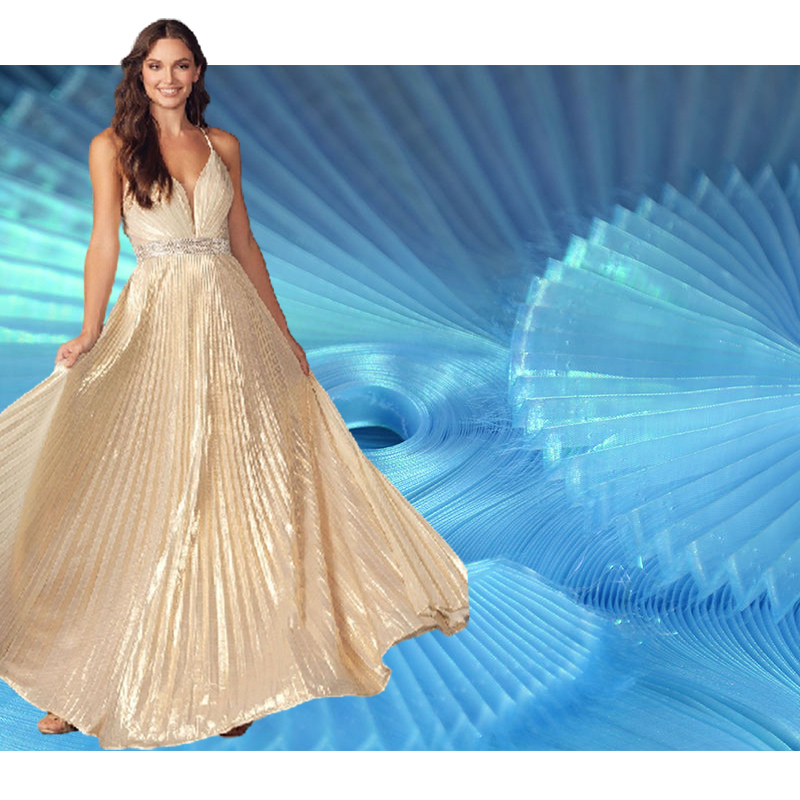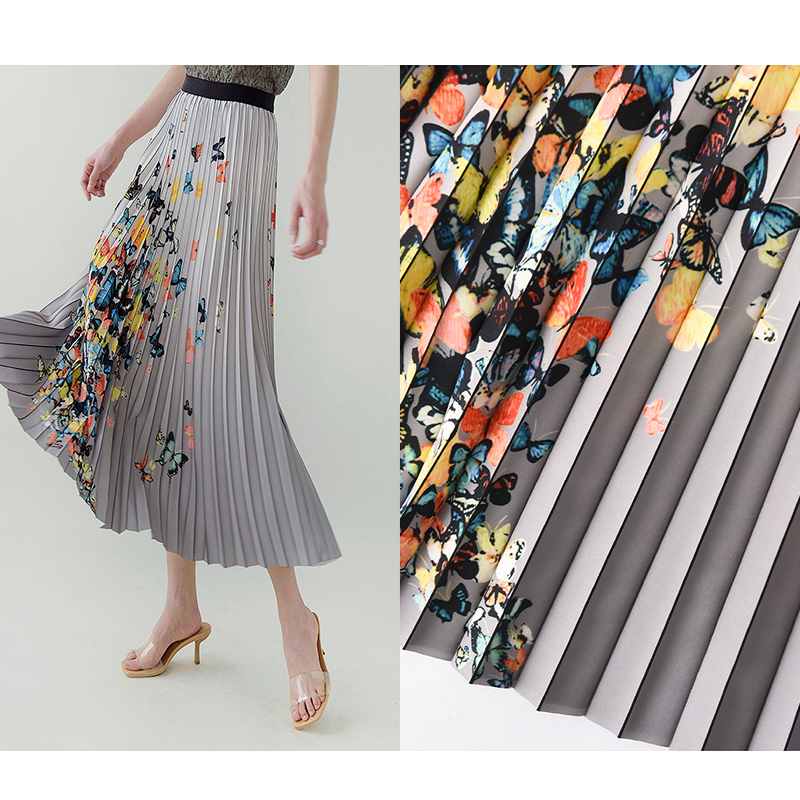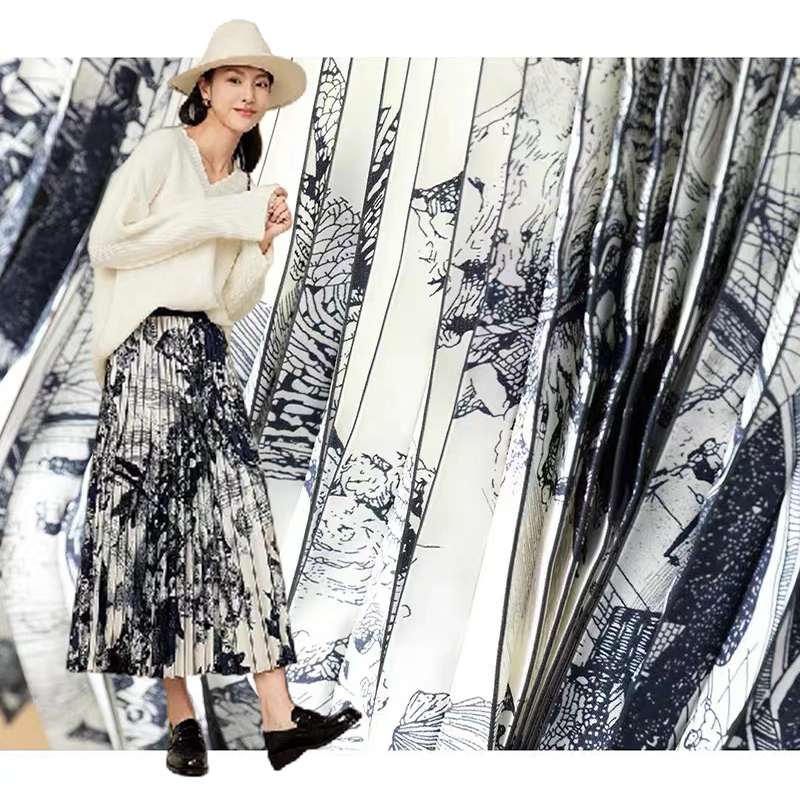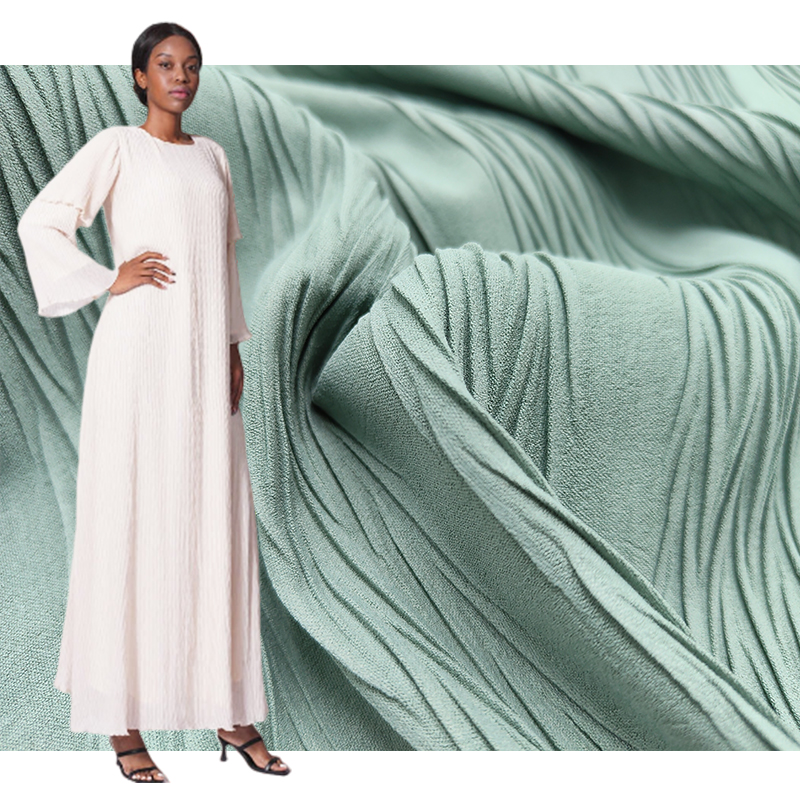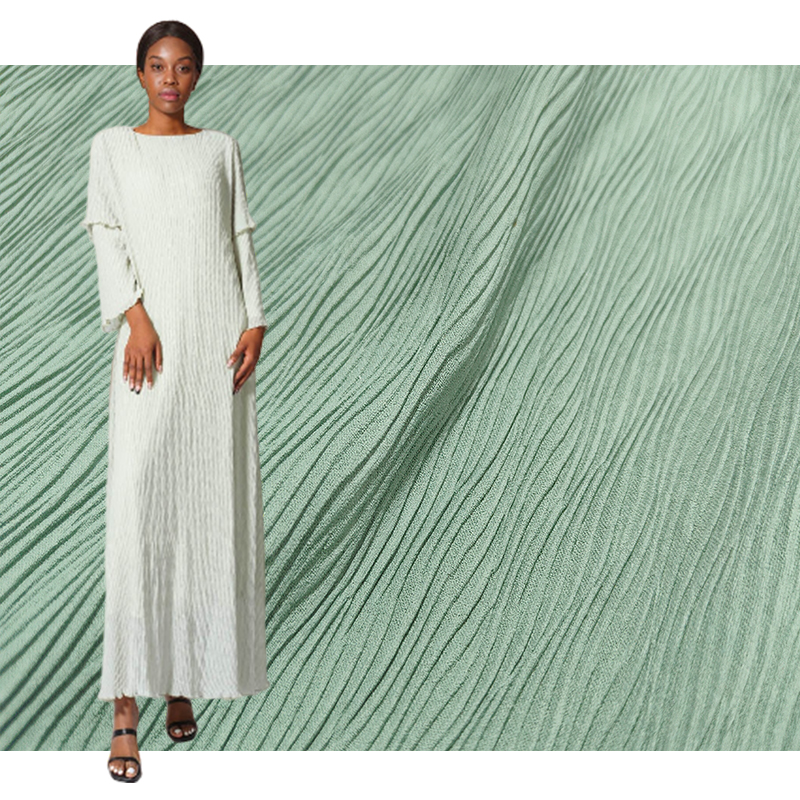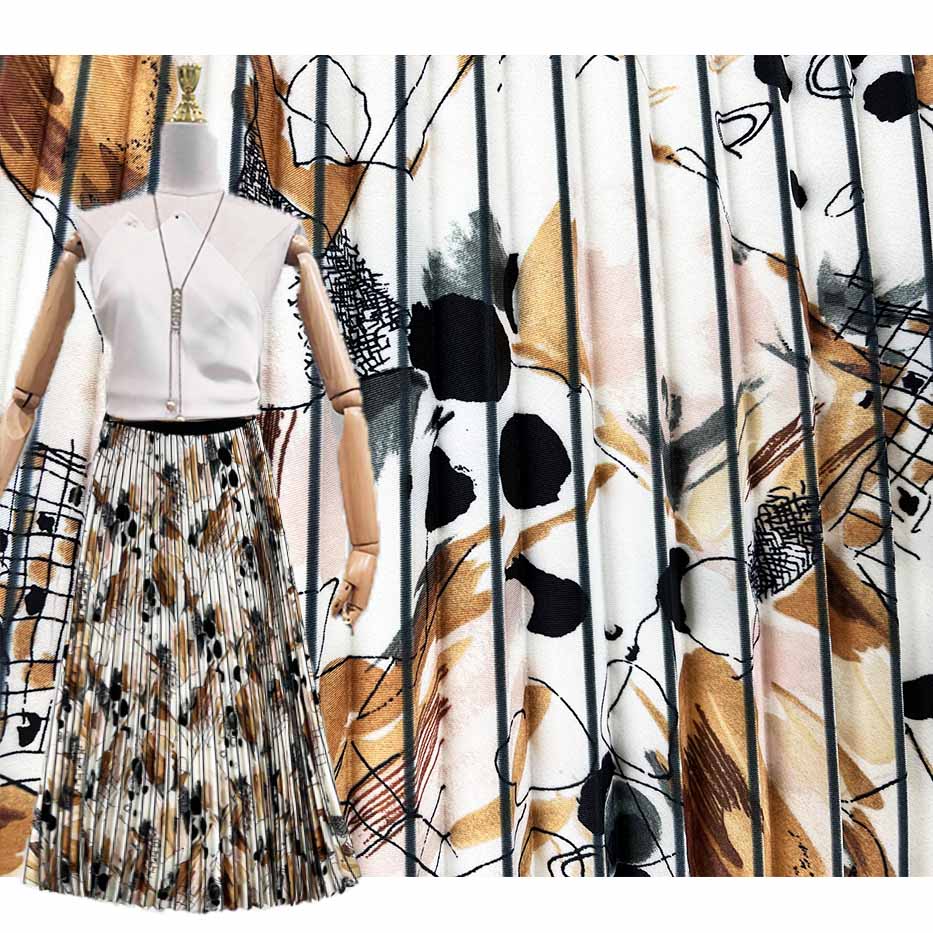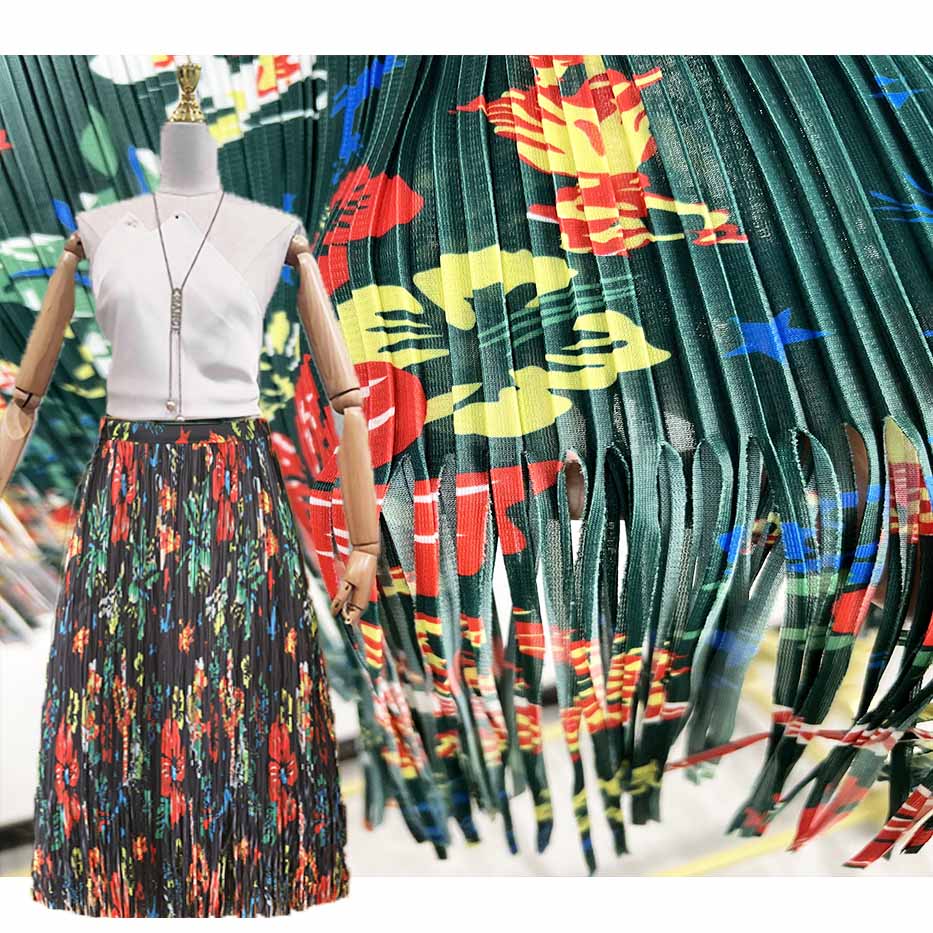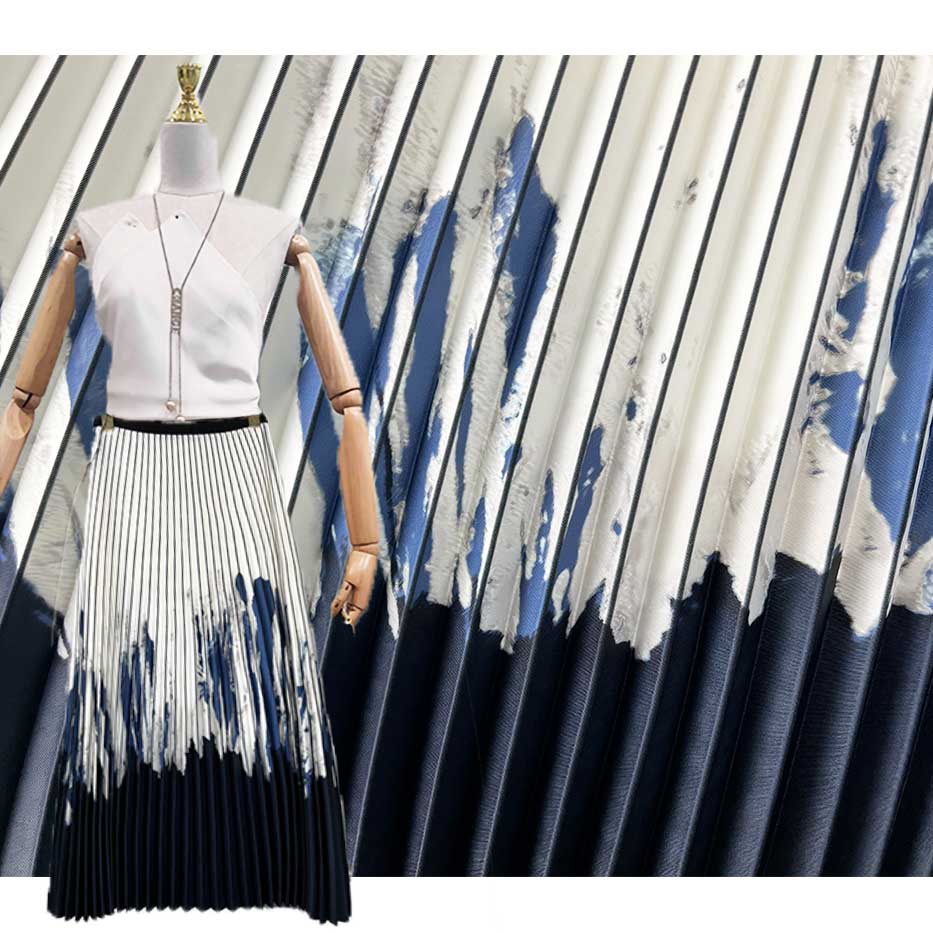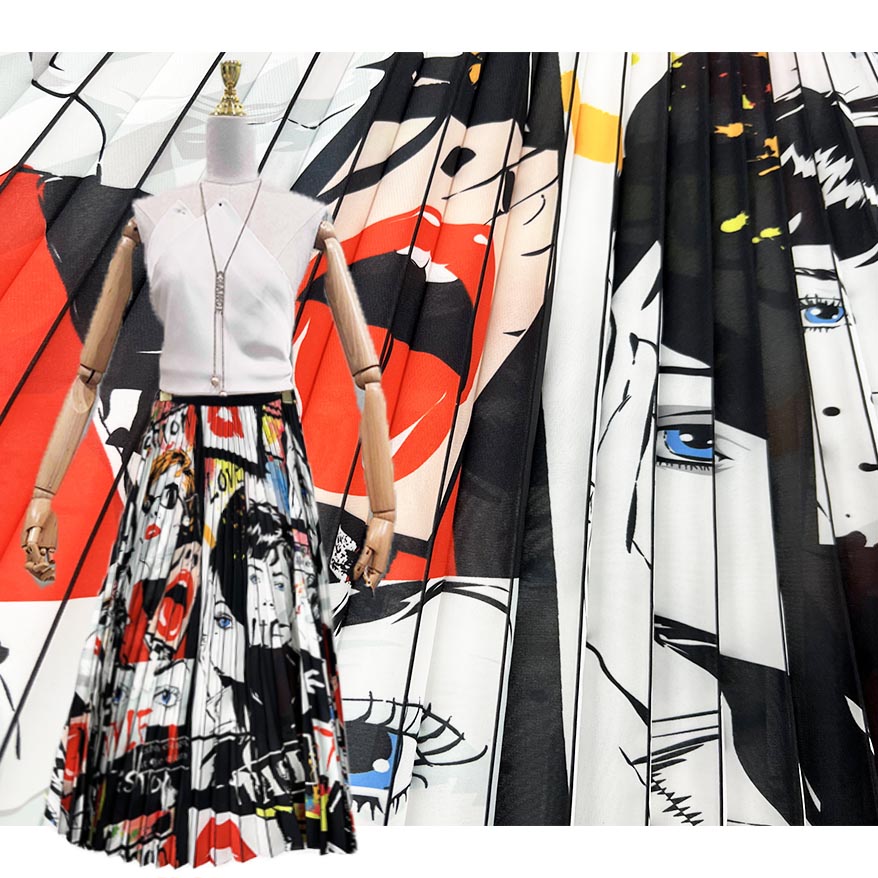Pleated Fabric
3D Gradient Pleated Organza Colorful Ombre lace Trim for Bridal Wedding Gown LXY-146
3D gradient pleated organza colorful gradient lace decorated bridal wedding dress, three
Butterfly Print Mid-Length Pleated Skirt Chiffon Fabric
Today, I'm going to introduce you to a fabric that will absolutely amaze you - the chiff
Wholesale pleated chiffon skirt fabric
I'm a fashion lover and always on the lookout for the latest trends. And today, I want t
how to accordion pleat polyester upholstery cey fabric
Pleats are key in surface textures and embellishments, a popular minimalist trend that h
Accordion Pleated Polyester Cey Chiffon Fabric By The Yard
Cey crumpled fabric with micro-stretch style for stretchy,This year's new fashion fabric
Flower Line Ink Painting Printed Pleated fabric PA-21096
Flower line ink painting printed pleated fabric creates a visually captivating textile.
Floral Hem Tassels Printed Pleated fabric PA-21095
Floral hem tassels printed pleated fabric results in a fabric with a visually dynamic an
Ink Painting Printed Chiffon Pleated Fabric PA-21093
ink painting printed chiffon pleated fabric results in a unique textile that showcases t
Colorful Characters Printed Chiffon Pleated Fabric PA-21092
Colorful characters printed chiffon pleated fabric is a fabric that combines a vibrant a
Many girls tend to pay attention to the style and ignore the fabric when buying clothes,
but the most important thing that affects the texture and comfort of a piece of clothing is the fabric.
Fashion fabricand s, fashion wear, can combine different design elements, embroidery, printing, creasing, ing and other post-processing techniques to create practical and fashionable items。
Knowing more about clothing fabrics is very helpful for post-processing such as printing and creasing. The clothing fabrics applicable to each process are also different.
Fashion fabrics refer to fabrics with unique textures and characteristics used in fashion design and clothing production. They can be soft, smooth, breathable or textured and three-dimensional. The choice of fashion fabrics often depends on the designer's creativity and the fashion style to be expressed. Common fashion fabrics include cotton, silk, wool, denim, leather, and more. They can be used to make all kinds of fashion clothing and accessories to meet the needs of different occasions and seasons, creating a stylish, individual and stylish effect.
Fashion fabrics have a wide range of uses and can be used for the following:
Fashion Design: Fashion fabric is one of the important materials for designers to create fashion. They can be used to create various types of clothing, including shirts, skirts, pants, coats, and more. Fashion fabrics give garments unique textures, colors and textures that make them unique.
Fashion Accessories: The fabric can also be used to make various fashion accessories such as scarves, hats, gloves, shoes, etc. The choice and collocation of fashion fabrics can add style and personality to accessories, making the overall shape more complete and fashionable.
Home Decoration: Certain fashion fabrics can also be applied in the field of home decoration. They can be used to make curtains, cushions, tablecloths, bedding, etc., bringing a stylish atmosphere and decorative effect to the home environment.
Stage performances: In stage performances and artistic performances, fashion fabrics are often used to make stage costumes and theater costumes. They can shape characters for actors and enhance visual effects through the reflection of color, texture and light.
Creative design: The diversity and special properties of fashion fabrics make them an important element of creative design. Designers can use the characteristics of fabrics to create unique fashion artworks, art installations or displays to showcase their personal creativity and style.
All in all, fashion fabrics play an important role in the fashion industry, bringing fashion and personal effects to clothing, accessories, home decoration and stage performances through their unique textures, colors and textures.
What is fashion fabric?
Fashion fabric refers to the materials or textiles used in the production of clothing and accessories in the fashion industry. It encompasses a wide range of fabrics that are specifically chosen for their aesthetic qualities, durability, and suitability for various types of garments. Fashion designers and manufacturers carefully select fabrics based on factors such as texture, color, pattern, weight, and drape to achieve the desired look and feel of a particular garment.
Fashion fabrics can be made from natural fibers, such as cotton, silk, wool, linen, and hemp, or synthetic fibers, such as polyester, nylon, rayon, and acrylic. Additionally, blends of different fibers are often used to combine the desirable characteristics of each material.
Fabrics used in fashion can vary greatly in terms of their properties and uses. For example, lightweight and breathable fabrics like cotton and linen are popular choices for summer clothing, while heavier fabrics like wool and tweed are commonly used in winter garments. Silk is often favored for its luxurious feel and draping qualities, while synthetic fabrics like polyester offer wrinkle resistance and durability.
Fashion fabrics are available in a wide range of patterns, including solids, stripes, plaids, florals, and various prints. They can also be treated or finished in different ways to enhance their appearance or performance, such as dyeing, printing, embossing, or applying special coatings.
In summary, fashion fabric refers to the diverse range of materials used in the creation of clothing and accessories in the fashion industry, chosen for their aesthetic qualities and functional characteristics.
What are fashion fabrics made of?
Fashion fabrics can be made through various processes depending on the type of fiber being used and the desired characteristics of the fabric. Here are some common methods of fabric production:
-
Spinning: For natural fibers like cotton, wool, and silk, the process typically begins with spinning. Spinning involves taking the fibers and twisting them together to form yarn or thread. This can be done using spinning machines or hand-operated spinning wheels.
-
Weaving: Weaving is a method used to create fabric from yarn or thread. In this process, vertical threads called warp yarns are stretched tightly on a loom. Horizontal threads called weft yarns are then woven over and under the warp yarns to create a tightly woven fabric. Different weaving techniques, such as plain weave, twill weave, and satin weave, can be used to produce different fabric textures and patterns.
-
Knitting: Knitting is another technique used to create fabric, especially for garments like sweaters, socks, and T-shirts. It involves interlocking loops of yarn to form a stretchable and flexible textile. Knitting can be done by hand or using knitting machines, which automate the process.
-
Non-woven fabrics: Non-woven fabrics are made by bonding or felting fibers together without weaving or knitting. This is achieved through processes such as heat bonding, chemical bonding, or mechanical entanglement. Non-woven fabrics are often used for applications like disposable garments, medical textiles, and interfacing materials.
-
Dyeing and Printing: Once the fabric is made, it can be dyed or printed to add color, patterns, or designs. Dyeing involves immersing the fabric in a dye bath, while printing applies color or designs onto the fabric's surface using various methods such as screen printing, block printing, or digital printing.
-
Finishing: After dyeing or printing, fabrics may undergo finishing processes to enhance their properties. This can include treatments like washing, ironing, calendering (to create a smooth surface), coating (to add a protective layer), or applying special finishes for properties like water resistance or wrinkle resistance.
It's important to note that the specific manufacturing processes and technologies used can vary depending on the type of fabric and the desired outcome. The advancements in textile technology have led to the development of new techniques, such as 3D printing of fabrics and the use of sustainable and recycled materials in fabric production.

